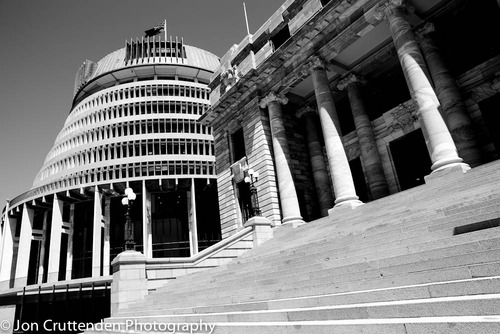
Herald-DigiPoll
The Herald have just released further results from a Herald-DigiPoll (part of their
Mid July political poll), which finds that "New Zealanders would rather money was
spent on improving teaching standards" - ostensibly National's position - "than on reducing class sizes" - allegedly the core of Labour's policy. (see article here
http://www.nzherald.co.nz/nz/news/article.cfm?c_id=1&objectid=11297568 )
The Herald-DigiPoll asked respondents: 'Labour has promised to lower class sizes by hiring 2000 more teachers instead of spending $359m National would spend on trying to improve teaching standards. Which of the following best fits your view ? (1) The money
is better spent on cutting class sizes or (2) The money is better spent on trying to improve teaching standards.'
The result:
Cut Class Sizes 34.5%
Improve Teaching Standards 61.3%
Don't Know/Refused 4.2%
Understandably, Labour's education spokesman, Chris Hipkins, has rejected the whole premise of the Poll question, pointing out that a focus on improved teacher training and quality was also a central facet of the policy package announced at the Labour Party Congress a few weeks back. Amongst other features, for instance, Labour announced it would use pre-screening to raise the standard of entry into teaching courses, would establish a comprehensive school advisory service to share best practice and act as mentors and advisors to teachers and would redirect resources currently spent on enforcing National Standards into teacher development programmes.
While The Herald would no doubt argue that the Parties' respective policy platforms needed to be greatly simplified in order to make them more easily comprehensible for poll respondents, there seems little doubt that Herald-Digi have asked a leading question, here (some have described it as push-polling) - framing things in a highly reductive Labour = Smaller Classes / National = Higher Teaching Standards narrative. And the problem goes much further than simply the exclusion of Labour's improved teacher training proposals. As a regular commentator on The Standard Blog has pointed out ( http://thestandard.org.nz/tuwhera-mike-23072014/#comment-853451 ) "What do they think the point of smaller classes is if not higher teaching standards ? Surely higher teaching standards is the desired result of both approaches.... But they're comparing the method on Labour's part with the desired goal on National's". Some have suggested a more accurate wording of the poll question would have been something along the lines of: Labour and National both say they want to improve the quality of teaching and outcomes for students. Do you prefer Labour's policy of seeking to achieve this by training more teachers in order to reduce class size OR National's policy of seeking to achieve this by financially-rewarding and utilizing executive principals and selected high-performing teachers ?
It's perhaps not all that surprising then that, on the simple and somewhat inaccurate terms in which the debate has been rendered by the MSM, most voters do, indeed, prefer National's strategy.
The Dominion Post Weighs-In
Nor is it surprising when one considers the broader MSM framing of Labour's education policy over recent weeks. Labour leader David Cunliffe announced the policy in a keynote address to the Labour Congress on Sunday July 6. And on the Monday immediately following, my local daily, The Dominion Post, seemed to want to nip any resulting cut-through with voters in the bud with its Front Page headline: Cuts only Half the Story - Educators.
"Labour's proposal to reduce class sizes", Dom Post journalists Michael Forbes and Olivia Wannan assured readers, in what seemed like an explicit, pre-prepared, in-your-face rebuttal, "has failed to win a universal gold star, with experts saying the small cuts without improving teaching would do little to raise the bar of student achievement."
Click on Read More for full Stats and Analysis


